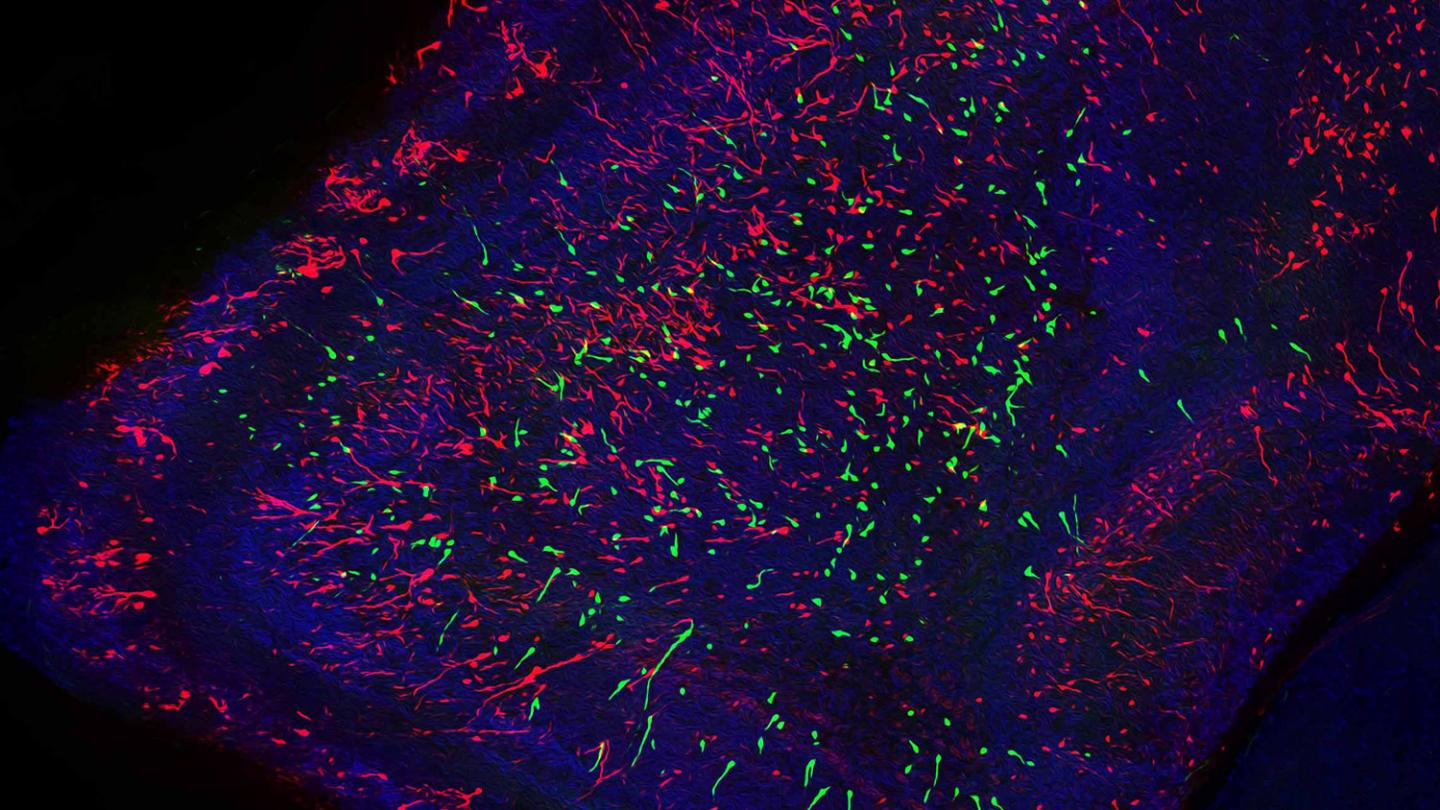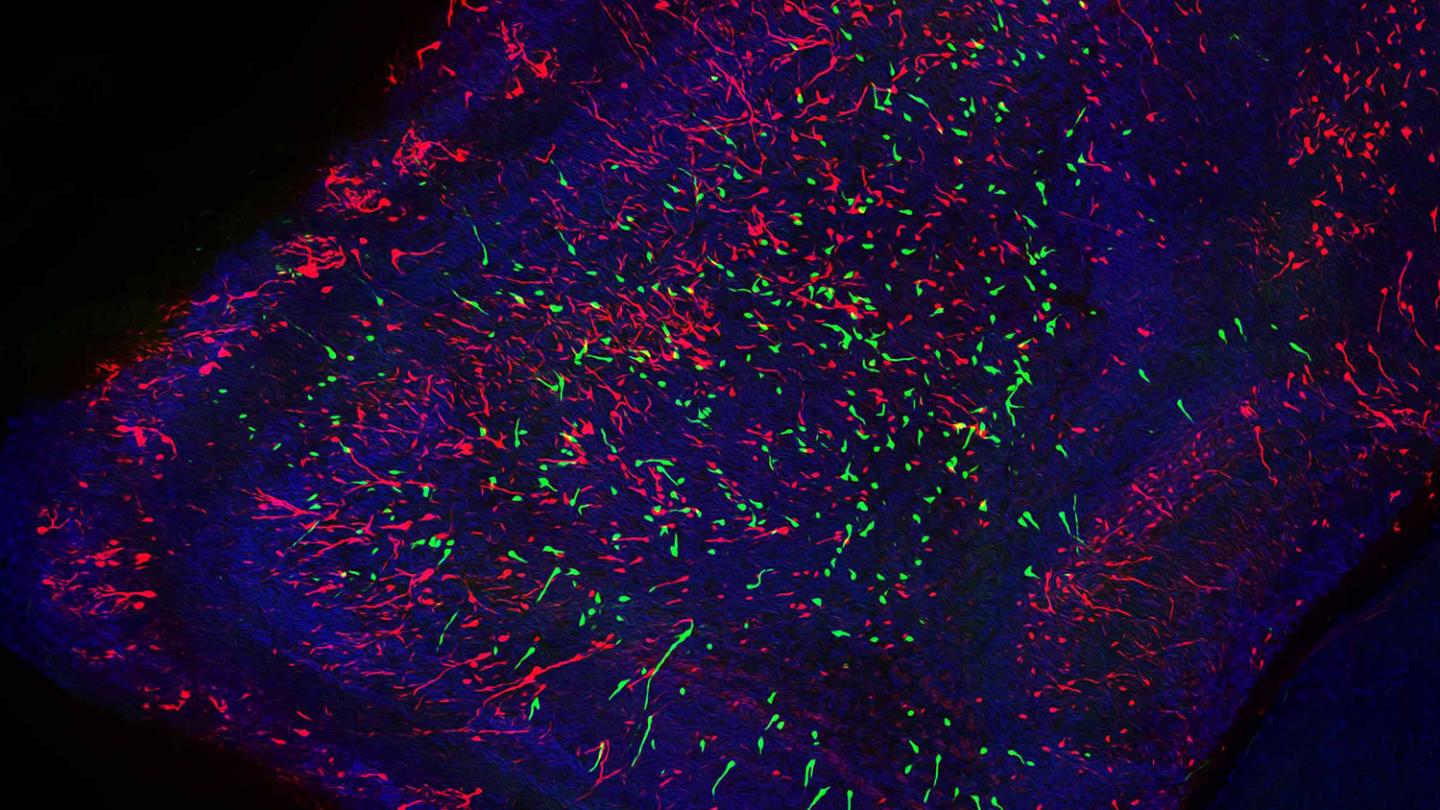
Credit: Troy Ghashghaei
New research from North Carolina State University shows that neurons generated at different life stages in mice can impact aspects of their olfactory sense and behavior. The work could have implications for our understanding of neurodevelopmental processes or traumatic brain injuries in humans.
Troy Ghashghaei, associate professor of neurobiology at NC State, studies the ways neurons develop and integrate into the "circuitry" of the brain. Mice are an excellent model for study, because even in adulthood they continue to produce neurons in two regions, one of which deals with the smell, or olfactory, centers of the brain.
Working with a population of young adult mice, Ghashghaei and his team looked at olfactory neurons that were generated when the mice were either newborn or young adults. The team wanted to know if there was a difference between the function of neurons that developed at different life stages.
"One way to study the function of different populations of neurons is to shut them off during different behavioral paradigms," says Ghashghaei. To shut off neurons, they introduced a gene into olfactory stem cells in the mice. The gene encoded a protein that would respond to a particular drug by turning off those olfactory neurons after they had matured. Thus the researchers could shut off neurons that were generated at different developmental time points.
In young adult mice, stopping activity of adult-born neurons affected their ability to recognize and develop memories for novel food odors – odors that they had never been exposed to before. In contrast, if the odor was aversive, or indicated danger – like the scent of a fox, for example – shutting off the adult-generated neurons had no effect; the mice responded normally by freezing in place. The adult-generated neurons, therefore, did not appear to have a role in mediating the innate response the mice had to aversive odors.
Puzzled by this finding, Ghashghaei and the team wondered if neurons generated immediately after mice are born were connected with responses to aversive odors. So they shut off 'early-born' neurons in the mice and found that the usual response to aversive odors was interrupted: the mice seemed unaffected by presence of a fox odor.
"Developmentally, there is a progression of neuronal addition to the olfactory system in mice," Ghashghaei says. "What this study demonstrates is that there are developmentally defined circuits – generated at specific points in time – that regulate different values of new sensory stimuli, and how sensory responses are processed and learned.
"The next questions to explore are how specific sets of neurons, generated at specific points in time, work together in complex behaviors, and how they may or may not be working in neurodevelopmental diseases or in conditions such as autism. Additionally, we want to look at how the neurons we have discovered are wired to other brain regions and whether or not these networks are responsible for regulating hedonic aspects of sensory perception."
###
The work appears in the journal Nature Neuroscience. Ghashghaei is funded by the National Institutes of Health (grants R01NS098370 and R01NS089795). Former NC State postdoctoral researcher currently at UNC-Chapel Hill Nagendran Muthusamy, NC State graduate student Caroline Johnson, and research associate Xuying Zhang contributed to the work.
Note to editors: An abstract of the paper follows.
"Developmentally defined forebrain circuits regulate appetitive and aversive olfactory learning"
DOI: 10.1038/nn.4452
Authors: Troy Ghashghaei, Xuying Zhang, Caroline Johnson, NC State University; Nagendran Muthusamy, UNC-Chapel Hill; Prem Yadav, CSIR-Central Drug Research Institute, Lucknow, India
Published: in Nature Neuroscience
Abstract: Postnatal and adult neurogenesis are region- and modality specific, but the significance of developmentally distinct neuronal populations remains unclear. We demonstrate that chemogenetic inactivation of a subset of forebrain and olfactory neurons generated at birth disrupts responses to an aversive odor. In contrast, novel appetitive odor learning is sensitive to inactivation of adult-born neurons, revealing that developmentally defined sets of neurons may differentially participate in hedonic aspects of sensory learning.
Media Contact
Tracey Peake
[email protected]
919-515-6142
@NCStateNews
Homepage





